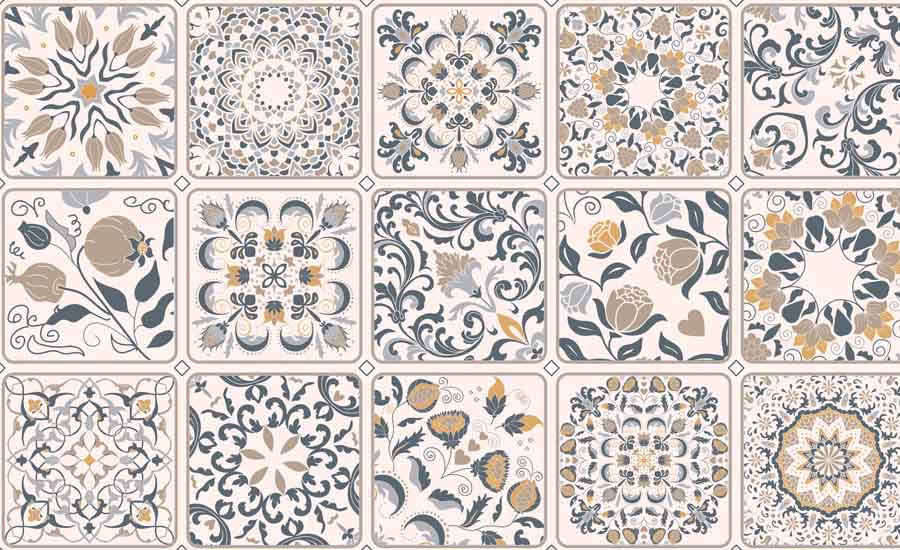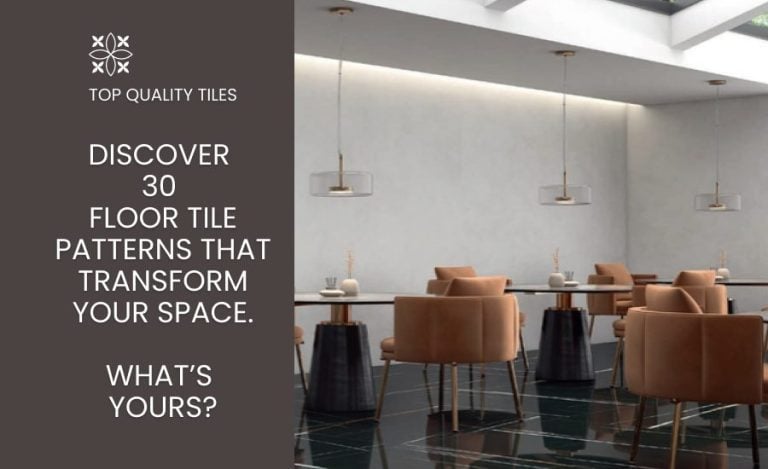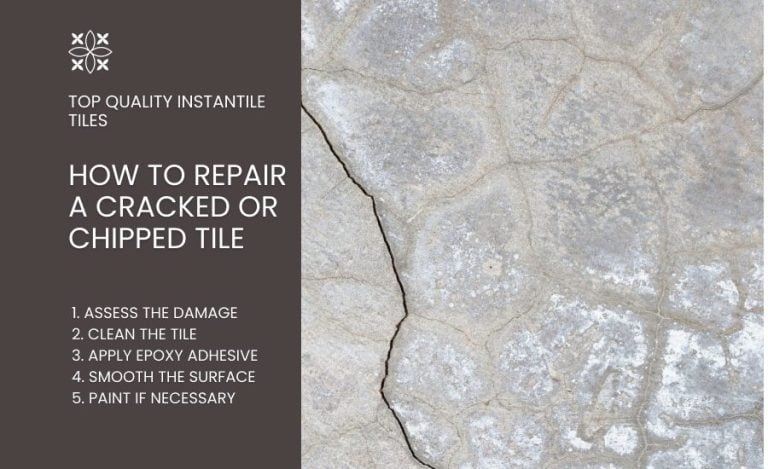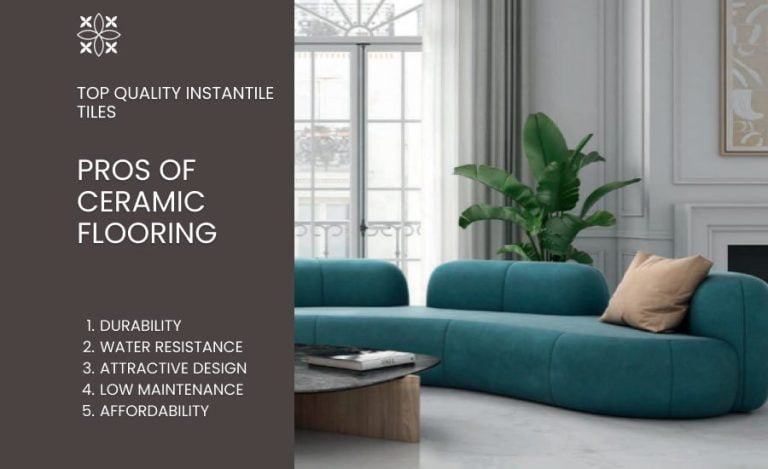Spanish Tiles Explained: Key Takeaways
- Spanish tiles add timeless charm and versatility, making them a favorite for kitchens, living rooms, and bathrooms
- Spanish tiles come in a range of striking styles, including terracotta, ceramic, and encaustic
- Traditional Spanish tile designs blend rich influences from Moorish, Gothic, Renaissance, and Baroque styles
As a real estate developer, an architect, or a homeowner, you might be looking for cost-effective flooring that adds a beautiful touch to your home or office.
Finding a solution that is elegant, durable, and sustainable can be challenging.
This is exactly where Spanish tiles come in.
In this guide, we will:
- Talk about Spanish tile art, the types and traditions, and the new trends that continue changing the future of tile design
- Introduce how Ceramista can provide accessible, fast, eco-friendly flooring options to help you turn your most daring concepts into reality
Spanish Tiles: Use and History
A Spanish tile is a versatile decorative tile used for flooring and walls in a variety of settings, such as:
- Kitchens
- Living rooms
- Bathrooms
- Restaurant and cafes
- Hotels
- Offices
- Retail shops
- Pools and fountains
Traditional clay Spanish tiles come in a wide range of colors, including blue, green, yellow, and terracotta. They feature geometric shapes, floral motifs, and nature-inspired designs.
Spanish tiles are a hallmark of traditional Spanish architecture, prized for their timeless beauty, their durability, and practical benefits.
Spanish tiles have functional purposes:
- They are durable and easy to maintain, making them ideal for high-traffic locations.
- Their insulation helps you manage temperatures in various climates.
Spanish tile art goes all the way back to the 8th century when the Moors brought their glazing processes, geometric designs, and artistic traditions to Spain.
Later, European Renaissance brought new changes, transforming Spanish tiles into a timeless symbol of elegance and beauty.
Areas known to produce Spanish tiles over the years include Seville, Valencia, Toledo, and Granada.
Types of Spanish Tiles
Based on the production materials, Spanish tiles are categorized into different categories.
Terracotta Tiles
Terracotta tiles are made from unglazed, baked clay, which gives them a natural, earthy color. Due to their porous structure, they need sealing to stop moisture absorption.
Owners of classic Spanish homes often choose them for roofing, flooring, and patios, as their rustic appearance goes well with traditional and Mediterranean designs.
Ceramic Tiles
Also made from clay, ceramic tiles are glazed to achieve a shiny, smooth surface. Water-resistant and easy to clean, they are a good choice for walls, kitchens, bathrooms, and other areas where you want to add an artistic touch.
In addition, they are lightweight and simple to install, making them an affordable solution for fast home makeovers.
Encaustic Tiles
Made from colored clays instead of glazes, encaustic tiles typically have a matte surface with a slightly textured feel, and patterns embedded into the tile so that they don’t fade with time.
Encaustic tiles are used as accents in patios or courtyards for a vintage look or statement pieces in restaurants, cafes, and boutiques.
Traditional Spanish Tile Designs
Traditional Spanish tile designs include Moorish, Gothic, Renaissance, and Baroque elements.
Geometric Designs
Focusing on symmetry, balance, and harmony, geometric tiles go all the way back to Moorish times.
These designs can include interlocking stars, hexagons, and other elements that create beautiful mosaics.
Floral Designs
Floral tile patterns, which became popular during the Renaissance and Baroque times, feature flowers, leaves, and vines.
These designs add an artistic touch to any courtyard, fountain, or wall.
Arabesques Patterns
Arabesque designs use smooth, intertwining lines that create complex, abstract shapes.
They were introduced by the Moors and became a standard of Andalusian architecture, serving as borders or frames to larger tiles or mosaics.
Modern Interpretations of Spanish Tile Art
Unlike bold and bright classic Spanish tiles, contemporary designs use new elements to suit modern tastes.
One such trend is the use of ceramic tiles that resemble other materials, for example, wood or stone.
- Tiles with wood effect: These offer the warm look of wood with the durability and easy upkeep of ceramic tiles.
- Tiles with stone effect: These imitate marble, limestone, or slate, giving a luxurious feel to spaces while keeping the practical side of ceramics.
- Tiles with metal effect: These resemble metallic surfaces, offering an elegant, modern look while benefiting from ceramic tiles’ easy maintenance.
- Tiles with concrete and cement effect: These look like concrete or cement that goes well with urban and industrial interiors and contrasts decorative Spanish tiles.
Modern tiles come in neutral colors, but you can still combine them with colorful Spanish designs to create accent walls or focal points.
Another trend is to use solar energy to power the tile manufacturing process, reducing carbon emissions and supporting sustainable practices.
Beyond enhancing visual appeal, these tiles also contribute to insulation, weather resistance, and long-term structural integrity.
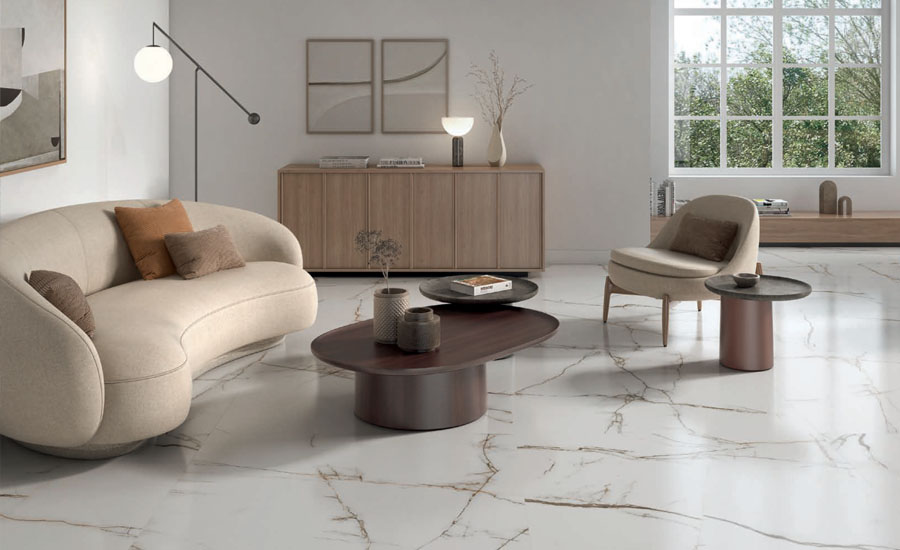
Transform Your Space With Ceramista
Are you looking for quick tile installation? It’s possible with Ceramista.
Our unique INSTANTILE interlocking-tile system allows nine times faster installation compared to traditional methods, ensuring cost saving and effortless setup while keeping the same high quality.
At Ceramista, we give a new meaning to Spanish tile craftsmanship by blending tradition with innovation to produce luxury, yet affordable flooring for real estate developers, designers, architects, and homeowners.
Are you looking for warm wood finish effect and elegant marble touch for your living room or exotic leopard print for your bedroom? Or bold black and gold accents for your bathroom? We have it all and more than just the design!
Our eco-friendly tiles are made from the most sustainable flooring materials on the market and produced by the largest solar plant in Europe.
Choose Ceramista and bring the heritage and quality of Spanish tile art to your next residential or commercial project in the United States.
Modern Tiles for Your Living Space: Things to Remember
When choosing tiles, consider a few key factors:
- Opt for versatility: Modern tiles come in different sizes and finishes, allowing you to choose the right type for your style and mood.
- Choose sustainability: Go for tiles from eco-friendly materials made with energy-efficient methods to reduce your impact on the environment.
- Colors matter: If you want to create elegant spaces, choose neutral tones. If you want to achieve a striking contrast, add bold colors.
- Consider installation: Some tiles are faster to install as they use “click-together” choices, saving both time and money.
If you want to read more about how to use tiles in homes and commercial spaces, check out our recent article.
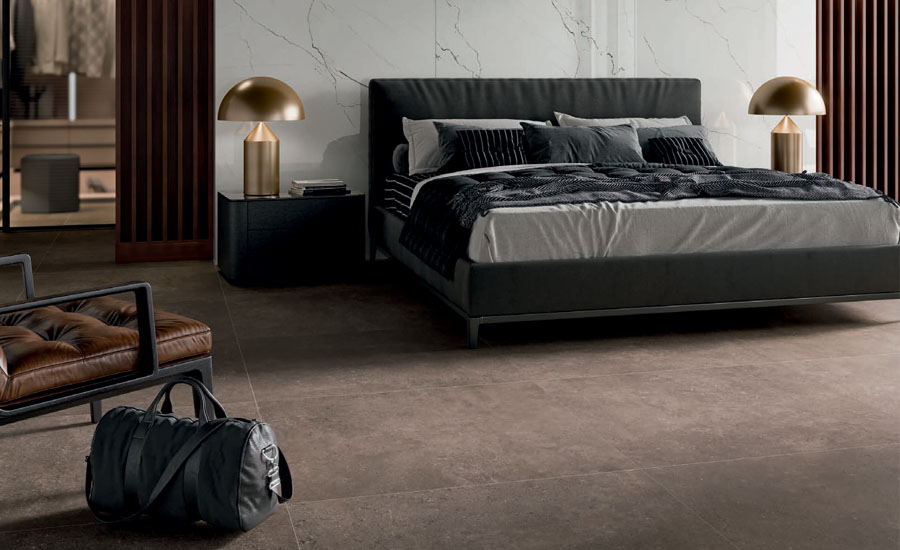
Modern Spanish Tile Art: FAQs
Do you want to learn more about the modern trends in Spanish tile art? Explore how new tile designs and materials can help you inspire your living or commercial spaces.
Why use ceramic tiles that look like natural materials?
Ceramic tiles that look like natural materials have many advantages. They are durable, moisture-resistant, and easy to maintain. They also help you achieve the look you want for your home or office with minimal maintenance.
What are the advantages of wood-effect tiles?
Wood-effect tiles bring the same cozy, natural appearance as real wood. They also don’t warp or shrink and are easy to clean, making them suitable for high-moisture areas like bathrooms or kitchens.
Can stone-effect tiles last as long as real stone?
Tiles with stone effect look like natural stone. While made from porcelain or ceramic, they are extremely durable and can resist scratches, stains, and moisture. Used with proper care, they can be a beautiful, long-lasting investment in your home.
Can tiles that imitate wood or stone be used in high-traffic areas?
Yes, these tiles can be used in hallways, kitchens, and living rooms as they are more durable than natural wood or stone. Due to their resistance to fading, stains, and scratches, they will continue to look great for many years.
Are wood- or stone-effect tiles cheaper than the ones made of these materials?
Wood-, stone-, or metal-effect tiles are less expensive than the ones made of the actual materials. They both provide the desired visual appearance and need less upkeep.
What are click-together tiles?
Click-together tiles interlock with one another without the need for grout or adhesive. This speeds up installation, saving time and labor costs.
Why is quick installation important?
Quick installation helps you complete a project faster, which is beneficial if you follow tight renovation schedules.
Can click-together tiles be removed easily?
Yes, click-together tiles can be removed easily, without damaging the tiles. This makes them an excellent choice if you plan future updates or remodeling.
Why should I choose Spanish quality tiles over other tile options?
Spanish tiles offer a combination of traditional craftsmanship and modern design, allowing you to choose between various colors, patterns, and textures. In addition, they are durable, easy to clean and eco-friendly.
